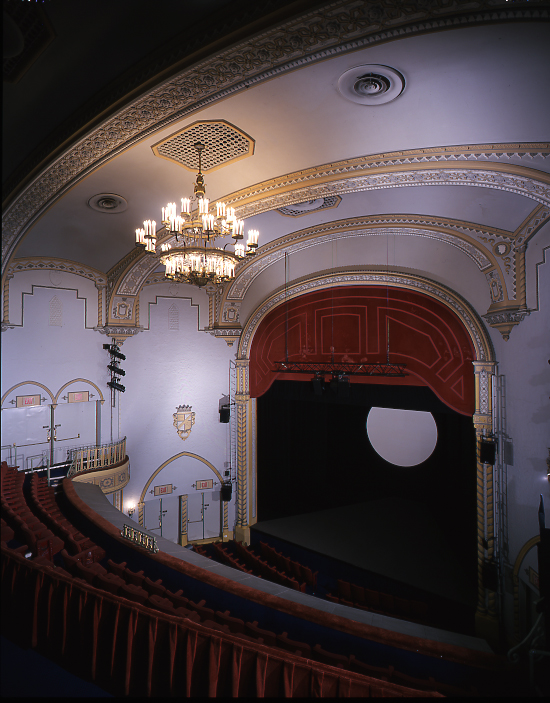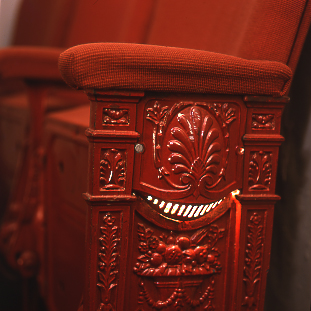

















HISTORY
The John Golden Theatre was originally built in 1927 as the Theatre Masque by real-estate magnates, the Chanin Brothers, as part of a three-theatre complex that also included the Royale (a mid-sized house) and the Majestic (a large house). The Theatre Masque, the most intimate of the three, was designed for serious dramas. In 1930, the Chanins transferred ownership of all three venues to the Shuberts. In 1937, when John Golden assumed its management, he renamed it after himself, the third playhouse to bear his name. The Shuberts took back control of the theatre in 1946, turning it into a film house for two years before restoring it to legitimacy in the late 1940s.
ARCHITECTURE
The Chanins hired the Shuberts’ favorite architect, Herbert J. Krapp, to design their three-theatre complex. The Golden’s interior has a Spanish influence, an example of the Mission Revival style popular on the West Coast. Interior features include rough plaster walls, wrought iron fixtures, spiraled columns, and ceiling arches.
Spotlight on Broadway: John Golden Theatre from Spotlight on Broadway on Vimeo.
Access Information
Theatre is not completely wheelchair accessible. There are no steps into the theatre (where there are steps we are unable to provide assistance).
Shubert Audience Services
The Golden Theatre provides accommodations for patrons who are blind, deaf, partially sighted, and/or have hearing loss. The theatre provides infrared assistive listening devices for every performance at the theatre. In addition, beginning four weeks after a show’s official opening night performance, hand-held audio description devices and hand-held captioning devices are available, and there is unlimited access to downloadable audio description and/or captioning for personal mobile devices free of charge. (Hand-held devices are limited, although additional devices can be obtained with at least twenty-four hours’ notice.) If you have questions, contact Shubert Audience Services at 212-944-3700 or audienceservices@shubertorg.com. There is also a representative at the Shubert Audience Services kiosk at every performance to assist any patron with any of our devices, software, or technology.
Accessibility by Seating Section
Orchestra: Seating is accessible to all parts of the orchestra without steps. Wheelchair seating is in the orchestra only.
Mezzanine: Located on the second level, up three flights of stairs, 28 steps. Once on the Mezzanine level there are approximately 2 steps per row. Entrance to the Mezzanine is behind row D.
Handrails: Available at the end of every stepped seat row in the Mezzanine.
Wheelchair | Companion Seat Locations:
Orchestra: E102 | E101, D101-102; E104 | E105, D103-104; O102 | O103, N101-102 | E120 | E119, D119-120; E122 | E123, D121-122
Aisle Seat with Folding Armrest | Companion Locations:
Orchestra: K2 | K4; L1 | L3, L101 | L102
Elevators/Escalator
None Available
Payphone
Located in the lower lounge. Accessible at 54", with TTY utility outlet and shelf.
Restroom
Not wheelchair accessible. Restrooms located down 2 flights of steps (down 19 steps to lower level.) Wheelchair accessible restrooms located in the Schoenfeld Theatre.
Water Fountain
Located in the lower lobby.
Theatre Policies
The use of cameras, recording devices, cell phones, beepers, and other electronic devices during the performance is prohibited. Everyone attending a performance must have a ticket. Latecomers will be seated at the discretion of management. Wheelchair and mobility-impaired seating is intended for patrons with mobility disabilities. Children under the age of four years will not be admitted. No outside food or beverage permitted, unless medically necessary. No weapons permitted on the premises.